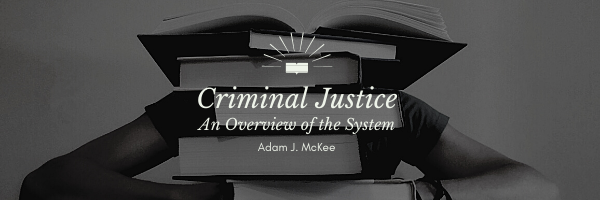[Go to the Text Section | Index]
Reading Assignment for Section 1.5
Read the following subsection from our online textbook: Section 1.5: The Criminal Justice Process (Continued).
What You Will Learn
In this section, you’ll explore the various steps of the criminal justice process and understand how discretionary decisions influence case flow. You’ll learn about bail, the differences between jury and bench trials, and why criminal trials are adversarial. Additionally, you’ll delve into common criminal sentences, the appeals process, and the “funnel” analogy for the criminal justice process.
Student Learning Outcomes for Section 1.5
- SLO 1: List and describe the various steps in the criminal justice process.
- SLO 2: Describe how discretionary decisions impact case flow through the criminal justice system.
- SLO 3: Define bail and describe when bail may be denied to an accused person.
- SLO 4: Differentiate between a jury trial and a bench trial.
- SLO 5: Explain why criminal trials are said to be an adversarial process.
- SLO 6: List and define the various criminal sentences commonly used in the United States today.
- SLO 7: Outline the appeals process, describing the duties of each actor in the process.
- SLO 8: Explain how the criminal justice process can be compared to a “funnel.”
Slide Presentations
For the Classroom: INTRO-Section-1-5-presentation
For Printing: INTRO-Section-1-5-print
Present from the web:
Download a Printable Vocabulary Study Guide [PDF]: Intro_Section_1.5
Study Flashcards for this vocabulary on Cram.com.
Last Updated: 07/15/2024
